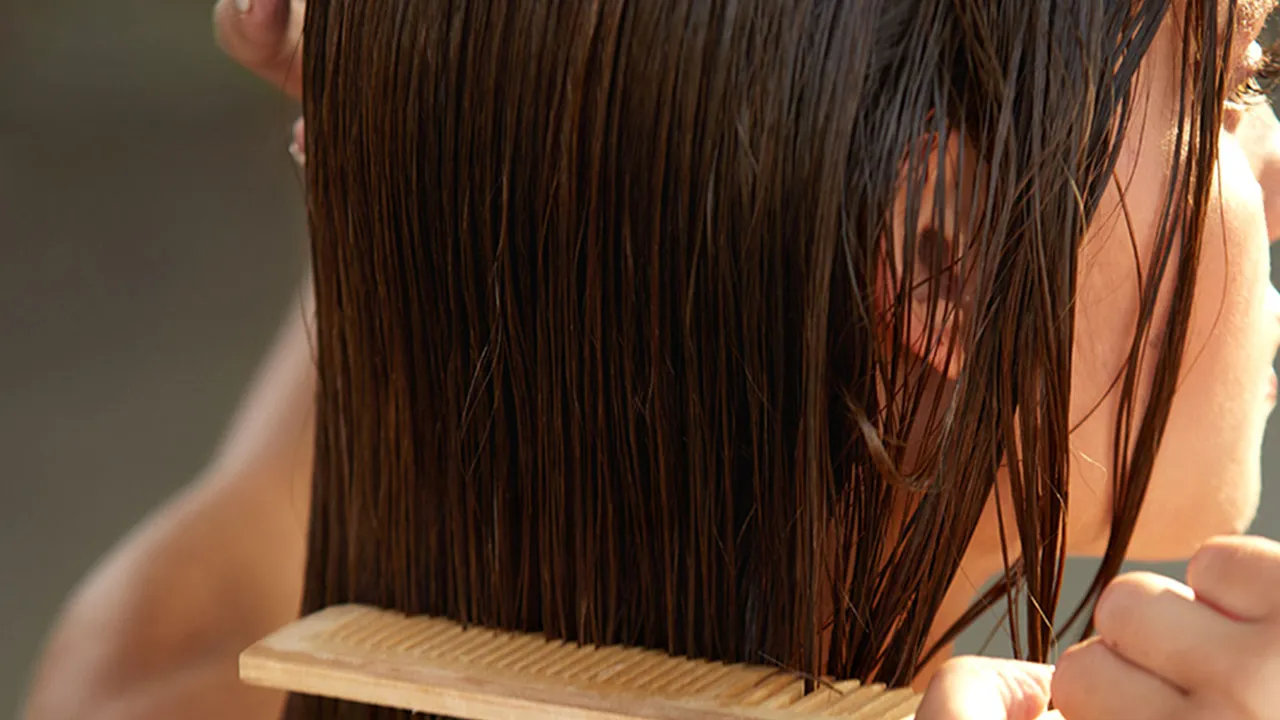Thin hair can be due to genetics, stress, nutrient gaps, or style damage. It affects not just appearance but also self-esteem. Understanding the root cause helps you choose the right care routine to regain thicker, healthier hair.
How to Tell If Your Hair Is Thin
You might have thin hair if:
-
Your scalp shows through
-
Ponytails feel limp or smaller than before
-
Hair looks flat midday
-
Breakage is frequent
Pinpointing thinning early helps you prevent further loss and boost volume.
Solution 1: Eat Smart for Stronger Hair
Your hair grows from nutrients in your body. These key nutrients help:
-
Protein builds hair structure—eat eggs, fish, beans
-
Iron supports oxygen flow—eat spinach and lentils
-
Omega-3 oils in walnuts and salmon strengthen strands
-
Biotin from nuts and whole grains prevents breakage
-
Vitamins A, C, D, E and zinc support scalp health
Add these foods daily. Pair with good hydration to support growth.
Solution 2: Use Volume-Boost Haircare Products
The right products can make hair look fuller quickly:
-
Volumizing shampoos (sulfate-free) don’t weigh hair down
-
Lightweight conditioners should only go on ends
-
Use root-lifting sprays or mousses on damp hair
-
Dry shampoo adds texture and grip in between washes
-
Avoid heavy oils—use light serums only on ends
These products lift each strand and add bounce without damage.
Solution 3: Scalp Care Is Key for Healthy Hair
A healthy scalp equals healthy roots:
-
Massage once a week with warm coconut or jojoba oil
-
Use gentle scalp scrub monthly to remove buildup
-
Avoid tight hair styles that restrict blood flow
-
Rinse with apple cider vinegar diluted with water for shine and buildup control
These habits improve blood flow and clear pores for better growth.
Solution 4: DIY Masks to Strengthen Your Hair
Natural masks can reduce breakage and encourage growth:
-
Banana + honey mask softens and moisturizes
-
Egg + yogurt pack adds protein and shine
-
Fenugreek seed paste reduces hair fall and supports growth
-
Aloe vera + castor oil mix nourishes the scalp deeply
Use weekly for best results.
Solution 5: Style Smart to Prevent Breakage
Bad styling habits can worsen thin hair:
-
Avoid heat tools or always use a heat-protectant spray
-
Blow-dry on low settings and rough-dry with your fingers
-
Use wide-tooth combs to detangle gently
-
Choose silk or satin pillow covers to reduce friction
-
Pick hairstyles that avoid tight pulling
These tips keep hair length longer and reduce thinning by damage.
Solution 6: Try Supplements for Added Support
If diet isn’t enough, supplements can help:
-
Biotin improves strength and thickness over time
-
Collagen peptides support hair structure
-
Multivitamins fill key nutrient gaps
-
Omega-3 capsules reduce inflammation and support scalp health
Always check with your doctor, especially if pregnant, nursing, or taking prescription meds.
Solution 7: Consult a Dermatologist for Underlying Issues
If home fixes are not enough:
-
A dermatologist can diagnose hormonal issues or scalp conditions
-
They may recommend minoxidil, platelet-rich plasma therapy, or laser devices
-
Prescription treatments like anti-androgens may help hereditary thinning
Professional guidance ensures safe and effective treatment.
Daily Routine Summary for Well—Balanced Hair Health
Follow this daily checklist to fight thin hair:
-
Eat protein, healthy fats, veggies
-
Use volumizing shampoo and minimal conditioner
-
Massage scalp after shampooing
-
Apply protein mask weekly
-
Style gently and protect with heat spray
-
Sleep on silk pillowcase
-
Take supplements if needed
Consistency matters more than perfection—small steps daily make a big difference.
Real Results You Can Expect Over Time
-
Weeks 2–4: Improved shine and less breakage
-
Months 2–3: Noticeable thickness and volume
-
6 Months+: Longer, fuller hair and healthy scalp
Track your hair’s progress by measuring your ponytail or taking monthly photos.
When to Worry and Seek Help
Contact a doctor if you notice:
-
Sudden or patchy hair loss
-
Scalp itching, scaling, or pain
-
Rapid shedding more than 100 strands per day
-
Family history of early baldness
These signs may suggest more serious issues that need treatment.
Caring for Thin Hair in the Long Run
-
Avoid excessive styling damage
-
Refresh your cut every 8–12 weeks
-
Rotate using masks—don’t overdo protein treatments
-
Stay hydrated and stress-free
-
Maintain balanced diet and exercise routinely
These habits support ongoing hair health and volume.
FAQs
Q1. How fast can hair get thicker?
You may see shine and less breakage in weeks, but visible thickness takes 2–3 months or longer.
Q2. Can vitamins fix all hair loss?
Only if there’s a nutrient deficiency. Genetic or hormonal hair loss needs medical care.
Q3. Should I use oil every day?
Avoid applying oils to your scalp daily. Massage-scalp weekly and apply conditioner mainly to ends.
Q4. Are minoxidil or medicines safe?
Over-the-counter minoxidil is safe with some known mild side effects. Prescription options need a professional’s advice.
Q5. Does cutting hair make it thicker?
No—hair thickness is determined at the root. But trimming removes split ends and makes hair appear healthier.
Also Read: Grey Hair Solutions Nobody Told You Till Now: Natural Remedies That Really Work
Most Read Article: How College Students Can Earn Passive Income Without Affecting Studies
